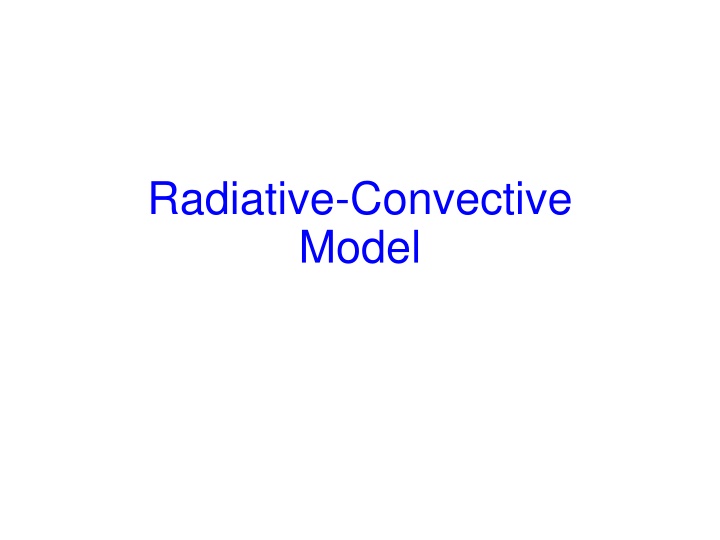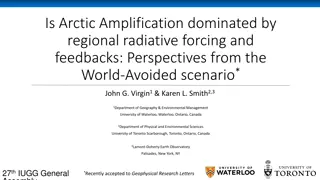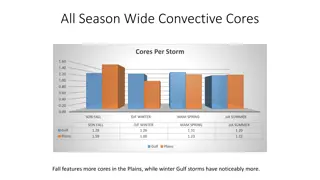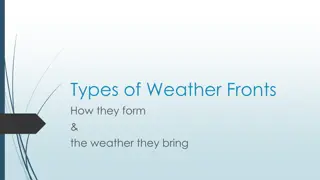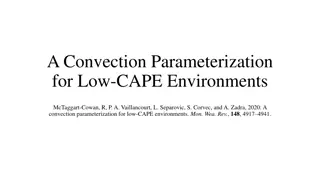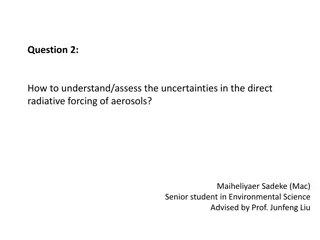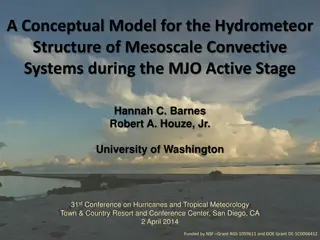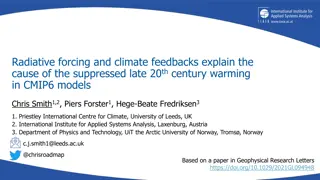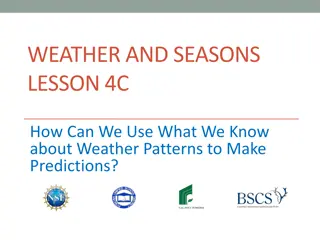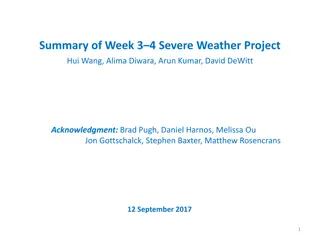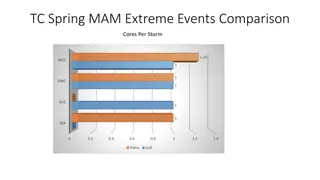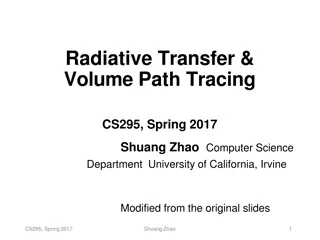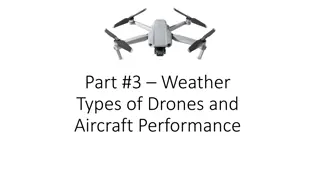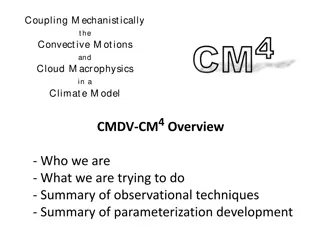Detailed Overview of a Radiative-Convective Model for Weather Prediction
This detailed overview explores the components of a Radiative-Convective Model, covering convection, radiation transfer, cloud-radiation interaction, and surface fluxes. The model incorporates algorithms and parameterizations to simulate various cloud types, radiative transfer processes, and surface energy balances, allowing for comprehensive weather prediction simulations.
Download Presentation

Please find below an Image/Link to download the presentation.
The content on the website is provided AS IS for your information and personal use only. It may not be sold, licensed, or shared on other websites without obtaining consent from the author.If you encounter any issues during the download, it is possible that the publisher has removed the file from their server.
You are allowed to download the files provided on this website for personal or commercial use, subject to the condition that they are used lawfully. All files are the property of their respective owners.
The content on the website is provided AS IS for your information and personal use only. It may not be sold, licensed, or shared on other websites without obtaining consent from the author.
E N D
Presentation Transcript
Radiative-Convective Model
Overview of Model: Convection The convection scheme of Emanuel and ivkovic-Rothman (1999) uses a buoyancy sorting algorithm and represents an entire spectrum of convective clouds, from shallow, non-precipitating cumulus to deep precipitating cumulonimbus. Precipitation re-evaporates and drives an unsaturated downdraft that imports enthalpy and moisture into the subcloud layer. Re-evaporation of cloud water, resulting from entrainment of dry air, drives penetrative downdrafts within the clouds. The cloud base mass flux is continuously relaxed so as to produce near neutrality of a parcel lifted dry adiabatically, and then moist adiabatically, to the first level above its lifted condensation level. This maintains a form of boundary layer quasi-equilibrium, wherein convection maintains neutral stability of air lifted from the boundary layer to a level just above the top of the boundary layer.
Overview of Model: Radiation Radiative transfer is computed interactively using the shortwave parameterization of Fouquart and Bonnel (1980) and Morcrette s (1991) longwave parameterization. Radiative fluxes are computed at each vertical level every 3 hours using instantaneous profiles of temperature, humidity, cloud fraction and cloud water path, and a climatological distribution of ozone. The user can specify concentrations of important greenhouse gases such as carbon dioxide, methane, ozone, and CFCs. The radiation can be fully time dependent, specified at a particular date and latitude, or averaged over a day or a year.
Overview of Model: Cloud-Radiation Interaction Stratiform clouds are represented using the parameterization of Bony and Emanuel (2001). This scheme is based upon the idea that the convection scheme predicts the local concentration of condensed water (the in-cloud water content) produced at the subgrid scale, and that a statistical cloud scheme predicts how this condensed water is spatially distributed within the domain. The cloud scheme uses a probability distribution function (PDF) of the total water whose variance and skewness coefficient are diagnosed from the amount of condensed water produced at the subgrid scale by cumulus convection and at the large scale by supersaturation, from the degree of saturation of the environment, and from the lower bound of the total water distribution that is taken equal to zero.
Overview of Model: Surface fluxes and surface energy balance Surface sensible and latent heat fluxes are calculated using conventional aerodynamic flux formulae with a constant exchange coefficient of 1.2 x 10-3. A specified background wind is enhanced by a gustiness factor produced by the convection scheme. Surface temperature can be specified, or calculated assuming that the surface is a slab of water of fixed depth.
Overview of Model: Full Model The model calculates time tendencies of temperature and specific humidity at each model pressure level, from the calculated vertical fluxes of enthalpy from the radiation, convection, cloud, and surface flux schemes, and of moisture from the convection, cloud, and surface flux schemes. These tendencies as marched forward in time using a leap-frog scheme with an Asselin filter.
Main References Convective Scheme: Emanuel, K.A., 1991: A scheme for representing cumulus convection in large-scale models. J. Atmos. Sci., 48, 2313-2335. Emanuel, K. A., and M. Zivkovic-Rothman, 1999: Development and evaluation of a convection scheme for use in climate models. J. Atmos. Sci., 56, 1766-1782. Radiation Scheme: Fouquart, Y., and B. Bonnel (1980), Computation of solar heating of the Earth's atmosphere: A new parameterization, Beitr. Phys. Atmos., 53, 35-62. Morcrette, J.-J. (1991), Radiation and cloud radiative properties in the European Centre for Medium-Range Weather Forecasts forecasting system, J. Geophys. Res., 96, 9121-9132.
Cloud-Radiation Scheme: Bony, S., and K. A. Emanuel (2001), A parameterization of the cloudiness associated with cumulus convection: evaluation using TOGA COARE data., J. Atmos. Sci., 58, 3158-3183. Radiative-Convective Model: Renn , N. O., K. A. Emanuel, and P. H. Stone (1994), Radiative- convective model with an explicit hydrological cycle, Part I: Formulation and sensitivity to model parameters., J. Geophys. Res., 99, 14429-14441.
